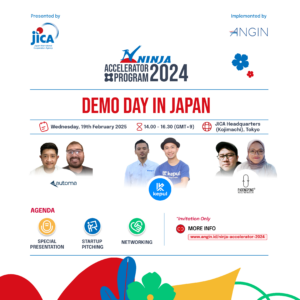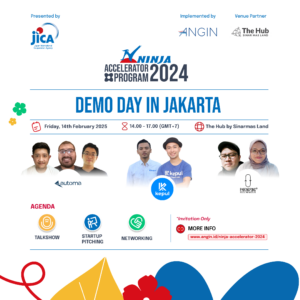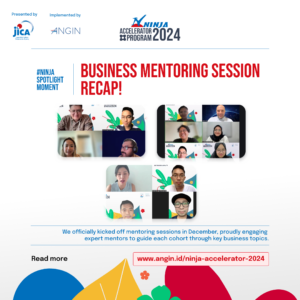[et_pb_section bb_built=”1″ admin_label=”section” transparent_background=”off” allow_player_pause=”off” inner_shadow=”off” parallax=”off” parallax_method=”off” padding_mobile=”off” make_fullwidth=”off” use_custom_width=”off” width_unit=”on” make_equal=”off” use_custom_gutter=”off”][et_pb_row admin_label=”row”][et_pb_column type=”4_4″][et_pb_text admin_label=”News Content” background_layout=”light” text_orientation=”justified” background_color=”#f9f9f9″ use_border_color=”off” border_color=”#ffffff” border_style=”solid” custom_padding=”20px|20px|20px|20px”]
Co-authors: Natalia Rialucky, Timothy Rann, David Soukhasing
Social enterprise | Impact investing | Impact measurement
One of the most frequently asked questions by impact investors to entrepreneurs, “How do you track your social impact?” Unfortunately, this may be the last question entrepreneur is able to answer. In the minds of entrepreneurs, tracking social impact has never been an easy task, most of the time it requires significant work to conduct surveys and in some cases there are challenges to get the right indicator to track the social impact. Entrepreneurs already face challenges in attracting capital, talent and other resources, few are able to allocate precious limited time and funding to expensive impact measurement activities. Moreover, many entrepreneurs do not see how this values their business. They do it simply because an investor or donor asks for this information.
In the impact space world currently there are two extreme solutions:
- (1) orthodox (“academic”) approach that involves a baseline assessment and consistent surveying / data collection to understand the impact of a control group (baseline) versus the group impacted by the business. This is very expensive (tens of thousands of dollars) and the results may take years to fully develop. In the meantime, the business might have pivoted away from its original target customer, social mission or both. Thus, the data is not useful for the business’ operations or strategy.
- (2) practical approach by only counting outputs, or the number of beneficiaries that purchase a product or service from a company. Businesses always track metrics like these. However, it is not clear if the sale of a product actually leads to some positive larger impact. For example, a family might purchase a cook stove that reduces fuel usage and does not pollute. However, they may not use the stove effectively, and as a result end up with more pollution in their household, causing a negative impact.
More mature impact investors in much more mature market such as Acumen and Other institution such as government supported initiatives may have the Social Return on Investment (SROI)[2] available.
Meanwhile on the other end, we have seen many early stage social entrepreneurs who had not spent time to think about measuring their metrics, but only looking at the number of beneficiaries without thinking how their businesses improve their lives. Often businesses have a vague idea of their intended social impact, and do not link their main activity (i.e. selling a product or service) with a larger, long-term impact (i.e. improved livelihoods for rural families).
Tracking social impact for social enterprises should not be an artificial process. Rather it should be at the core of each social enterprise business model. Our advisor, Timothy Rann, Senior Advisor at Mercy Corps Social Ventures Fund, suggested that every social enterprise should have a clear Impact logic. How does each business activity generate output, and how this output can result in desirable outcome for the beneficiaries and eventually generate a positive long-term impact.

Figure 1
Impact logic
One case example is Du’Anyam – a social enterprise that aims to reduce number of maternal health death rate in Flores. Du’Anyam’s core business is to design and manufacture fashion products (i.e. bags and slippers) using wicker sheets weaved by expecting mothers in Flores. Du’Anyam’s business activities involves scouting, training and empowering expecting mothers in Flores. These activities are expected to (output) help these women sell baskets thus providing them with incremental income. Tracking number of women Du’Anyam is working with is a start, but to measure the output, Du’Anyam needs to track the income of these women before and after joining their program. The expectation out of the improved income for the mothers (outcome) is to increase nutrition status of women of childbearing age, as well as higher bargaining power for women in Flores to make personal and family decision. This expected outcome does require a degree of assumption, however the team and investor should be comfortable with the assumption and make effort to control other influencing variables. In this case the main assumption is that the improved income will be spent in purchasing nutrition and that the women in the program will have less stressful pregnancies –initially caused by agriculture work. Out of this effort, the expected long term impact is to reduce number of maternal death in Flores. There are more assumptions to consider when translating outcome to impact, the further away the impact the bigger the assumption. Du’Anyam is committed to track % increase in women’s nutrition status and decision making power by rolling out Demographic and Health Survey (DHS) as a mean to track their outcome and eventually look at number of maternal health in Flores as their end impact.
One practical tip for entrepreneurs, is to focus on short-term metrics that are tied to your core operations (activities and outputs). In the early startup phase, you will need to assume that achieving outputs will lead to outcomes and impact. Moreover, you will want to ensure that you are reaching your target beneficiaries. However, you may not necessarily measure outcomes or impact until a later stage when the business is more stable and has the proper resources. In the startup phase, what is critical for entrepreneurs is to constantly refine their product or service so that it addresses a core customer need. The best way to do this is to gather customer feedback and insights as much as possible. According to your logic model, if you are constantly improving your products or services and reaching your target customers, your activities will eventually lead to a longer term impact.
One useful resource on how to track customer insight is Acumen’s Lean Data[3], which rely on the assumption that tracking your business metrics can provide meaningful customer insights that will be useful to know more about your beneficiaries and how much does your product impact them. Acumen’s Lean Data questions are a mix of customer satisfaction metrics (such as Net Promoter Score) and general survey about the beneficiary. Customer feedback is important to generate insights to help entrepreneurs improve their product and services to better serves the customers. With the assumption that your target customers are your beneficiaries, this will help in ensuring impact to them too.
Despite the complexity in tracking social metrics and converting customer insight to impact measurement, obtaining good quality data is still the main challenge for entrepreneurs. Sample representativeness, controlling for bias and ruling out outliers still need to be covered in every metrics tracking exercise.
Tracking your social impact may not be as troublesome as you think and you can always stage it as the company grows. As long as you have a clear impact logic in mind, tracking social impact can be hand in hand with tracking the business achievements.
[1] https://iris.thegiin.org/users
[2] //www.aphsa.org/content/dam/aphsa/pdfs/Innovation%20Center/2013-05-Social-Return-on-Investment-Brief.pdf
[3] //plusacumen.org/courses/lean-data/
[/et_pb_text][/et_pb_column][/et_pb_row][/et_pb_section]




